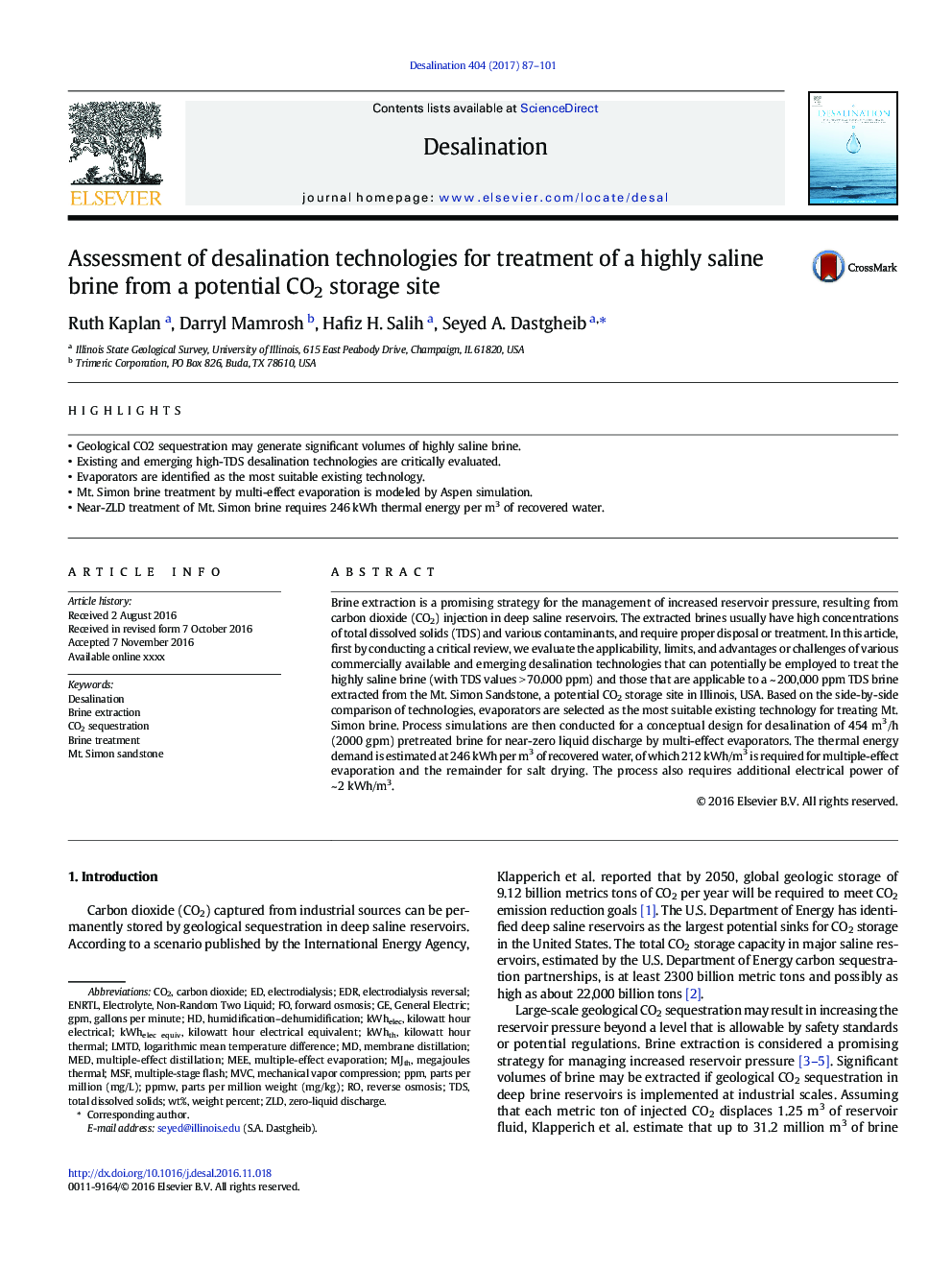| Article ID | Journal | Published Year | Pages | File Type |
|---|---|---|---|---|
| 4987834 | Desalination | 2017 | 15 Pages |
Abstract
Brine extraction is a promising strategy for the management of increased reservoir pressure, resulting from carbon dioxide (CO2) injection in deep saline reservoirs. The extracted brines usually have high concentrations of total dissolved solids (TDS) and various contaminants, and require proper disposal or treatment. In this article, first by conducting a critical review, we evaluate the applicability, limits, and advantages or challenges of various commercially available and emerging desalination technologies that can potentially be employed to treat the highly saline brine (with TDS values >Â 70.000Â ppm) and those that are applicable to a ~Â 200,000Â ppm TDS brine extracted from the Mt. Simon Sandstone, a potential CO2 storage site in Illinois, USA. Based on the side-by-side comparison of technologies, evaporators are selected as the most suitable existing technology for treating Mt. Simon brine. Process simulations are then conducted for a conceptual design for desalination of 454Â m3/h (2000Â gpm) pretreated brine for near-zero liquid discharge by multi-effect evaporators. The thermal energy demand is estimated at 246Â kWh per m3 of recovered water, of which 212Â kWh/m3 is required for multiple-effect evaporation and the remainder for salt drying. The process also requires additional electrical power of ~Â 2Â kWh/m3.
Keywords
gallons per minutemultiple-effect evaporationENRTLMt. Simon sandstoneTDSLMTDZLDEDRMEEppmMSFGPMMVCwt%Logarithmic mean temperature differenceBrine extractionForward osmosisReverse OsmosiselectrodialysisElectrodialysis reversalMEDMembrane distillationCO2 sequestrationweight percentBrine treatmentCarbon dioxideHumidification–dehumidificationGeneral ElectricMechanical vapor compressionTotal dissolved solidsdesalinationCO2
Related Topics
Physical Sciences and Engineering
Chemical Engineering
Filtration and Separation
Authors
Ruth Kaplan, Darryl Mamrosh, Hafiz H. Salih, Seyed A. Dastgheib,
